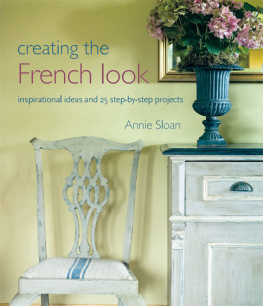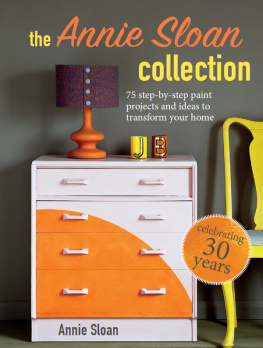Creating the
French
Look

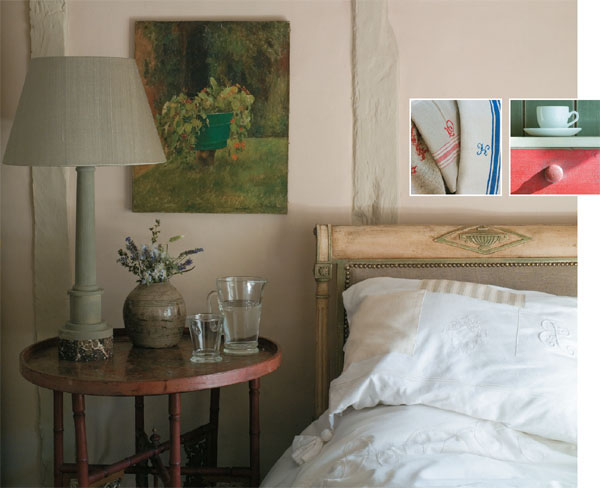
Creating
the
French
Look
inspirational ideas
and 25 step-by-step projects
annie sloan

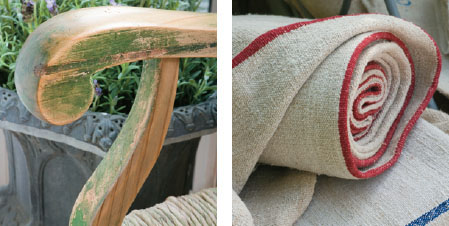
First edition published in 2008 by CICO Books
This paperback edition published in 2011 by CICO Books
an imprint of Ryland Peters & Small Ltd
2021 Jockeys Fields341 E 116th St
London WC1R 4BWNew York, NY 10029
www.rylandpeters.com
US: 20 19 18 17 16 15 14 13 12
UK: 20 19 18 17 16 15 14 13 12
Text Annie Sloan 2008, 2011
Design and photography CICO Books 2008, 2011
The authors moral rights have been asserted. All rights reserved. No part of this publication may be reproduced, stored in a retrieval system, or transmitted in any form or by any means, electronic, mechanical, photocopying, or otherwise, without the prior permission of the publisher.
The Chalk Paint trademark is owned by Annie Sloan Interiors Ltd. and is registered in the United States Patent and Trademark Office.
A CIP catalog record for this book is available from the Library of Congress and the British Library.
eISBN: 978 1 782495 03 1
ISBN: 978 1 907563 95 9
Printed in China
Project Editor: Robin Gurdon
Designer: David Fordham
Photographer: Christopher Drake
contents
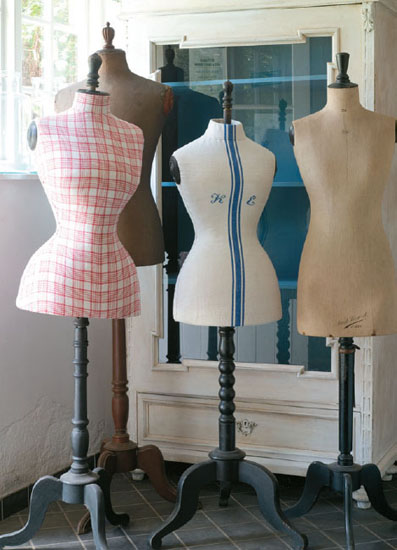
What better way to say France and, in particular, Paris than designers mannequins, here re-covered in vintage linen.
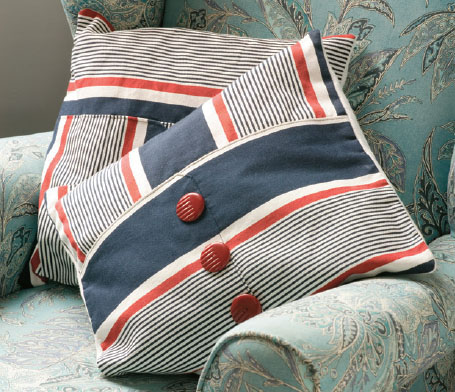
Decorative buttons draw attention to the clever use of striped fabric in these pillows to create a simple cross motif.
The distinct French sense of design in food, fashion, and interiors has had a profound effect on the rest of the world. Since the beginning of the 18th century right through to the present day it has continued to cast its spell over us. France has led the way not only in design but also in fine art. The most influential artists of the 20th century came from France, and Paris was the creative pulse at the center of it all.
It is difficult to define what French taste is and why it has continued to be so popular. For interiors, the best description is probably subtlety and simplicity but with flair. The style tends to be unadorned and crisp, the emphasis on less being more. In many other cultures, minimalism can become gruffly basic and crude; in French hands it is graceful and balanced with just the right amount of decoration and shapeliness. French style is playful and delicatenever heavy, never over-adorned, and never complicated. The curve of even the plainest chair leg has a sense of proportion and balance. Even at its grandest, furniture may be ornate but the color will be very quiet.

The simplicity of French style is summed up by the plain linen of a curtain edged with decorative braid, combined with the delicate and subtle colors of a hydrangea in a white pitcher.
In this book we have tried to bring together the elements of French style to help you achieve the look in your own home. We did not photograph in France but in the homes of people who know and love France, buy French furniture or paint reproduction pieces, and love good-quality materials. So rest assured the basic starting point does not need to be a fine farmhouse in Provence.
Just as French cuisine uses basic but very fresh ingredients so it is with interior design. Polyester, plastic, and fiber board wont do. Instead, fine cottons and linens, and natural materials such as metal, wood, stone, and terra cotta should be combined with matt paints rather than shiny, artificial finishes. France has never been a throwaway culture, so bear in mind the idea of adaptation and reuse is part of the countrys tradition.

A simple country-style, painted kitchen is given the French look with details such as the painted plates and the hooks for hanging pots and pans. Vintage dish towels look wonderful and are practical because linen absorbs water so well.
Part
One

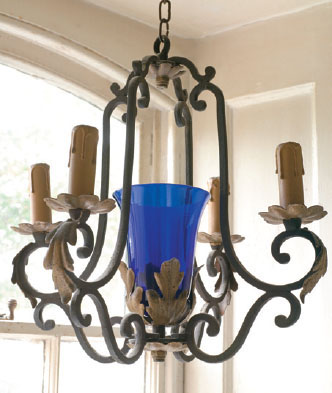
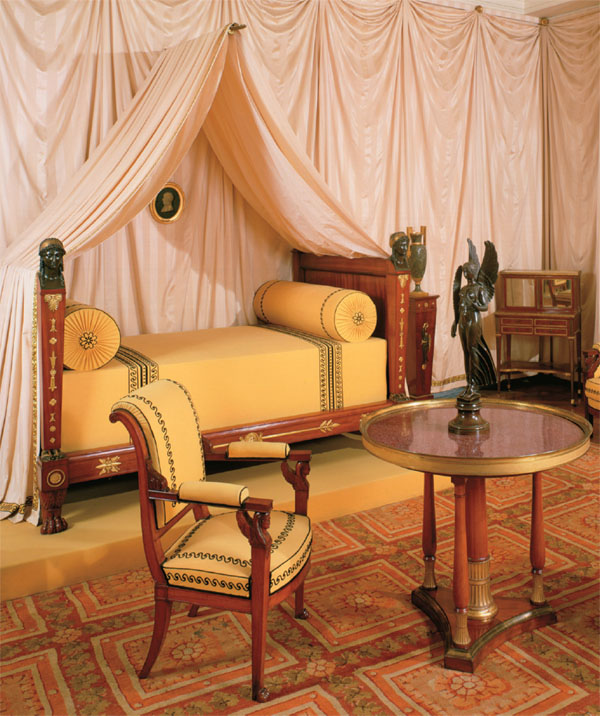
In contrast, the neo-classical design of Napoleons bedroom at the Chteau de Malmaison in Paris is simplicity itself. It looks modern but was designed about 50 years after the rococo rooms at Versailles. Symmetry and formality are the main elements. The most popular French design style today is a combination of flowing rococo and classical structure.
elements of French style
To help explain the wealth of decorative styles that France has given us, I have divided the history of French interior design by period and region, whether urban or rural. While this might be a little arbitrarythere is obviously a lot of crossover between the different areasit is a good way to begin to understand the essential ingredients of French design styles, including colors and fabrics. Each of the photographs on the following pages includes more or less the same components for chteau, country, Provenal, and Parisian styles. This makes it easier to see the unique combination of colors, fabrics, and materials that are used to create a particular look.
Historically, two main design movements originated in France. The extravagant rococo and the austere neo-classical styles developed either side of the extraordinary intellectual, political, and artistic upheaval that surrounded the French Revolution. Both were extremely influential across Europe, and feature everywhere from the French farmhouse to Parisian apartment.
The following style photographs also reflect the way in which French country society was highly stratified with houses ranked as manoir, maison gentilhomme, maison de matre, and maison bourgeois over and above the simple farmhouse and cottage. The manoir might be an owners country retreat for the summer or the home of an aspiring merchant, so the style would be quite different from a working farmhouse interior.
The French urban look has come to mean the chic and bohemian sophistication of the capital city. Paris is still a city of culture and design, but its boom time was in the first half of the 20th century. Although there is a lot of crossover, Parisian style can be broadly divided into the cultivated and refined

